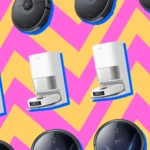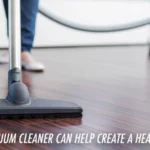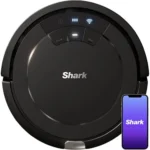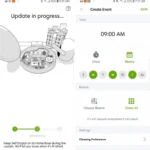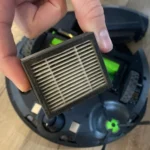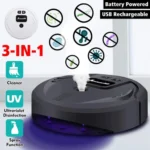Have you ever wondered about the differences between robot and traditional vacuum cleaners? With so many options available on the market, it can be perplexing to decide which one to choose. Both have their advantages and disadvantages, and it ultimately comes down to your personal preferences and needs. In this article, we will break down the differences between these two types of vacuum cleaners step-by-step, so you can make an informed decision on which one is right for you. From technology and cost to ease of use and cleaning performance, we’ll dive into it all.
Robot Vacuum Cleaners
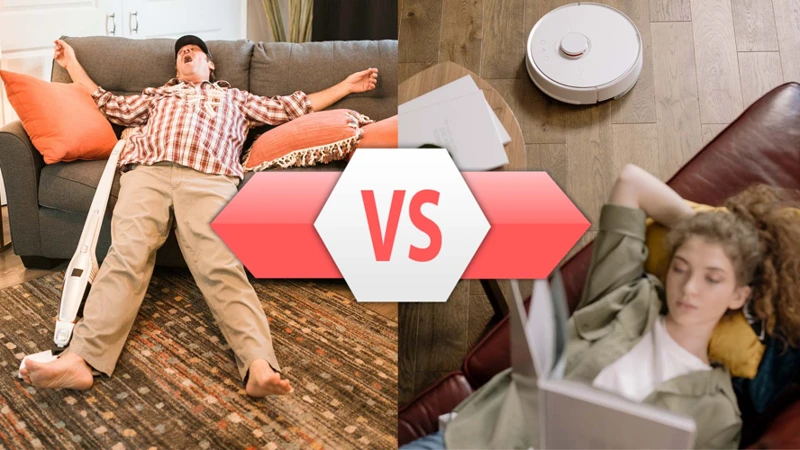
As cleaning becomes an increasingly important aspect of everyday life, more and more people are turning towards high-tech solutions to save time and effort. Robot vacuum cleaners have become particularly popular due to their ability to clean a space thoroughly and efficiently without needing much guidance or attention. These devices offer several advantages over traditional vacuums, such as efficiency and time-saving capabilities. Let’s explore what robot vacuums are, how they work, their advantages and disadvantages, and what to consider before purchasing one.
What Are Robot Vacuum Cleaners?
Robot vacuum cleaners are automated devices that are designed to clean floors and carpets without requiring any human intervention. They are equipped with advanced navigation and mapping technologies that enable them to navigate around the house, clean tight spaces, and avoid obstacles. These vacuum cleaners are small in size and are equipped with a self-charging mechanism that ensures that they return to their docking station when their battery is running low. Some popular brands of robot vacuum cleaners include Roomba, Neato, and Shark.
Robot vacuum cleaners are equipped with sensors that help them to detect obstacles and avoid them. They are designed to navigate around furniture, carpets, and different types of flooring without causing any damage. They use advanced mapping technologies that help them to remember the layout of the house and maximize cleaning coverage. They are also equipped with HEPA filters that improve the air quality within the home by trapping allergens and dust particles.
Unlike traditional vacuum cleaners, robot vacuum cleaners are designed to be easy to use and require little maintenance. They are a great option for people who want to simplify their cleaning routine and reduce the amount of noise pollution within the home. Additionally, robot vacuum cleaners are becoming more affordable, making them a cost-effective and convenient option for many households.
Robot vacuum cleaners are a great investment in the future of home cleaning. They offer a range of advantages, including smart mapping technology, noise reduction, and improved air quality. Want to learn more about why robot vacuums are worth it? Check out our article for a deeper dive into the topic.
How Do They Work?
Robot vacuum cleaners use advanced technology and sensors to move around a room and clean up any dirt or debris. Here’s how they work:
1. Navigation: Robot vacuums use sensors and algorithms to navigate a room. They often use LIDAR (Light Detection and Ranging) technology, which works like sonar, emitting a beam of light that reflects off objects in the room to map its surroundings.
2. Cleaning: Once the robot vacuum has mapped the room, it will begin cleaning. Some models move in a random pattern, while others use a more systematic approach to maximize coverage. Some advanced models use smart mapping technology to create a map of your home that it uses every time it cleans. This ensures maximum cleaning coverage, and these models are often able to clean more efficiently than those that move randomly. You can read more about the benefits of smart mapping technology in our article about the advantages of smart mapping in robot vacuums.
3. Filtration: Robot vacuums come equipped with a variety of filters to help trap particles and allergens. Some models even come with HEPA filters, which can help improve air quality in your home. To learn more about the benefits of HEPA filters, check out our article about improving air quality with HEPA filters in robot vacuums.
4. Battery Life: Most robot vacuums come with rechargeable batteries that are able to last for a certain amount of time before they need to recharge. Some models use advanced battery technology to improve battery life and extend the amount of time they can clean before needing a charge. You can read more about this in our article about the future of home cleaning with robot vacuums.
5. Maintenance: Robot vacuums are typically very low maintenance. They often come equipped with dustbins that are easy to remove and empty, and their filters are easy to clean or replace. Some models even have self-cleaning brushes that automatically remove any tangled hair or debris. To learn more about how robot vacuums can simplify cleaning, check out our article about simplifying cleaning with robot vacuums.
Robot vacuum cleaners are incredibly advanced and effective tools for cleaning your home. While they may be more expensive than traditional vacuum cleaners as discussed in our article about robot vs. traditional vacuum costs, they offer a number of benefits, including improving air quality and reducing noise pollution, as discussed in our articles about reducing noise pollution with robot vacuums and improving air quality with HEPA filters in robot vacuums respectively.
Advantages and Disadvantages
When considering the advantages and disadvantages of robot vacuum cleaners, there are a few key things to keep in mind:
- Advantages:
- Convenience: Robot vacuums are incredibly convenient as they can operate autonomously without any human intervention. You don’t have to worry about pushing and pulling the heavy device around your house.
- Time-saving: As robotic vacuums clean your floors autonomously, you can devote your time to other pressing chores. You can focus on something else when the robot is effectively cleaning your floors.
- Ease of use: Robot vacuum cleaners are incredibly user-friendly. With the press of a button, they can be deployed, allowing you to work on something else while the vacuum does its job. What’s more, some robots come with voice commands to make their use even more convenient.
- Maximizes cleaning coverage: Because of their advanced mapping and navigation technology, robot vacuums traverse every nook and cranny, leaving no space uncleaned. (Check out our article on maximizing cleaning coverage with your robot vacuum cleaner!)
- Disadvantages:
- Initial cost: Robot vacuums can be expensive compared to traditional vacuums, especially the ones with advanced features. Keep in mind that the price can vary depending on their features and quality.
- Requires maintenance: Though the maintenance required for robot vacuums is relatively simple and less frequently required, they need to be kept clean and the brushes and filters replaced periodically for maximum efficiency.
- Not as powerful: Although many robot vacuums have made progress in terms of power, they still lack the suction power of larger traditional vacuums. While they can pick up small debris, if you have deep carpeting or your home is a pleasant home to pets, you will need to use a traditional vacuum for the deepest cleaning.
- May get stuck: Due to their small size, robot vacuums may get stuck under furniture or in tight corners. Their sensors, however, find the areas that they can or can’t reach but they are not always successful at finding their way back to the charging dock.
When weighing the advantages and disadvantages of robotic vacuums, it’s essential to keep your specific cleaning demands in mind. Convenience, time-saving, and ease of use are great benefits of robot vacuums, but they’re not the best option for deep cleaning needs. Traditional vacuums tend to offer more cleaning strength, particularly for deep-cleaning carpets and pet hair.
What to Consider Before Purchasing a Robot Vacuum Cleaner
When looking to purchase a robot vacuum cleaner, there are several factors that should be taken into consideration. Here are some key points to keep in mind before making your purchase:
| Factor to Consider | Description |
|---|---|
| Size and Layout of Your Home | Consider the size and layout of your home to ensure that the robot vacuum cleaner you select is capable of cleaning the desired areas effectively. A larger home may require a robot with a longer battery life and larger dustbin capacity, while a smaller apartment may be suited to a more compact design. |
| Navigation Technology | Navigation technology is an important consideration when evaluating robot vacuum cleaners. If you have multiple rooms or a complex floor plan, you may want to consider a robot with advanced mapping and navigation technology, such as laser or camera-based systems. |
| Filtration System | A vacuum cleaner’s filtration system is important for eliminating allergens, dust, and other harmful particles from your home’s air. If you or anyone in your household suffers from allergies or asthma, you should look for a robot vacuum cleaner with a high-efficiency filter. |
| Battery Life and Charging Time | The battery life and charging time of a robot vacuum cleaner is an important consideration, particularly if you have a larger home. Longer battery life will ensure that the robot can cover more ground before needing a recharge, while shorter charging time will reduce downtime. |
| Dustbin Capacity | The dustbin capacity determines how frequently you will need to empty the robot’s dustbin. A larger dustbin capacity will save you time and effort in maintenance, while a smaller capacity may require more attention and maintenance. |
| Obstacle Detection and Avoidance | Robot vacuum cleaners use sensors to detect and avoid obstacles in their cleaning path. If you have complex furniture arrangements or numerous obstacles on your floors, you may want to look for a robot with advanced obstacle detection and avoidance systems. |
| Cleaning Performance on Different Surface Types | Depending on the type of flooring in your home, you may need to consider the robot’s cleaning performance on different surface types. If you have a mix of carpeting and hardwood floors, for example, you may want to choose a robot with adjustable brush height and power settings. |
By considering these factors carefully, you’ll be able to identify which robot vacuum cleaner is the best fit for your home and lifestyle.
Traditional Vacuum Cleaners
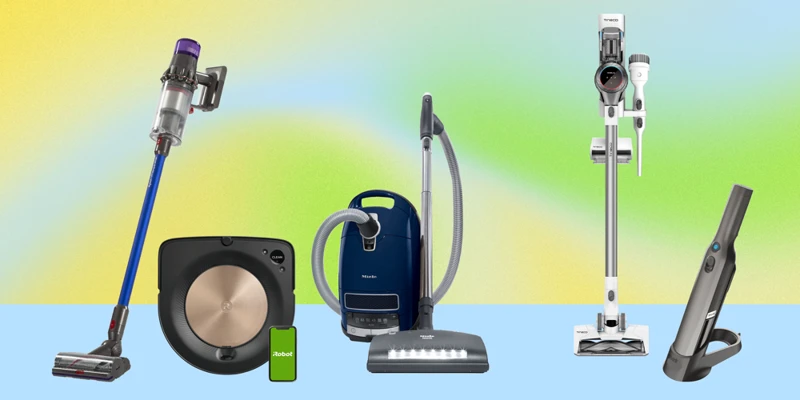
When it comes to cleaning your home, there’s nothing quite like the classic traditional vacuum cleaner. These reliable cleaning devices have been around for decades and continue to be a popular choice for those who want a deep and thorough clean of their carpets and floors. With a wide range of options available on the market, from upright to canister, bagged to bagless, it can be overwhelming to know where to start. Let’s dive into what makes traditional vacuum cleaners stand out and what you should consider before making a purchase.
What Are Traditional Vacuum Cleaners?
Traditional vacuum cleaners are the more common type of vacuum cleaners available in the market. They are typically bulkier and heavier compared to robot vacuum cleaners. These are the types where you have to push around the machine as you clean.
Features of a traditional vacuum cleaner
To further understand the features of a traditional vacuum cleaner, let’s break it down into various components in the table below:
| Components | Description |
|---|---|
| Suction power | The suction power of a traditional vacuum cleaner is usually higher than that of a robot vacuum cleaner. This is because they have a more powerful motor to provide the suction needed to clean up dirt and debris in the home. This cleaning power makes them perfect for heavy-duty cleaning of carpets and high traffic areas. |
| Filtration system | Traditional vacuum cleaners come with a filtration system to trap the dirt and dust particles that are vacuumed up. They typically use a bag or a filter to collect the dirt and dust. These bags need to be replaced regularly to maintain the effectiveness of the vacuum. Some traditional vacuum cleaners also come with HEPA filters which trap smaller particles that might escape normal filtration systems. |
| Attachments | Traditional vacuum cleaners come with various attachments such as crevice tools, upholstery brushes, and dusting brushes to clean various surfaces in the home. These attachments make it easier to clean tight spaces and different surfaces. |
| Power cord | Unlike robot vacuum cleaners that are battery operated, traditional vacuum cleaners are powered by electricity through a power cord. This means that it has limitations on the distance it can clean at a go due to cord length. |
| Noise level | Traditional vacuum cleaners generally produce more noise than robot vacuum cleaners. The noise level can range from 70 decibels to 90 decibels depending on the type of vacuum and the motor’s power. This can be disruptive and require hearing protection in some cases during cleaning. |
Choosing between a traditional vacuum cleaner or a robot cleaner largely depends on your preference and cleaning needs. If you have several rooms with many carpets and a busy lifestyle, a traditional vacuum cleaner might be ideal for you.
How Do They Work?
Robot vacuum cleaners are a technological marvel that is quickly gaining popularity. Let’s take a look at how they work to give you an idea of how they can be so efficient.
1. Sensors: Robot vacuum cleaners are fitted with various sensors, including infrared and cliff sensors, to help them navigate around the home. The infrared sensors detect obstacles, while the cliff sensors prevent the vacuum from falling down stairs.
2. Mapping: Once the robot vacuum has mapped out your home, it uses its sensors to navigate from room to room. It accomplishes this by using a combination of mapping, learning, and obstacle avoidance algorithms.
3. Cleaning: When a robot vacuum reaches a room, it uses its rotating brushes to sweep dirt and debris into its suction area. The suction area pulls the dirt and debris into the dustbin, which can be emptied later.
4. Charging: Once the robot vacuum has cleaned a room, it moves on to the next room or returns to its charging dock to recharge its battery. Some more advanced models can even find their charging dock all by themselves.
Robot vacuum cleaners are designed to be an efficient and time-saving solution for keeping your home clean. With their advanced sensors, mapping algorithms, and efficient cleaning mechanisms, they take the hassle out of cleaning your home.
Advantages and Disadvantages
Robot Vacuum Cleaners Advantages and Disadvantages:
- Advantages:
- Convenience: Robot vacuum cleaners can be programmed to clean the house even when homeowners are not around. They can run at any time of the day and can be controlled through voice commands or an app on a mobile device.
- Time-Saving: Robot vacuum cleaners are efficient and can cover more ground in less time when cleaning the house. This means homeowners can have more free time to do other activities.
- Sleek Design: Robot vacuum cleaners have a modern and stylish look that can add to the aesthetics of a home. They come in various shapes and colors, making it easier for homeowners to choose one that suits their preference.
- Disadvantages:
- Expensive: Robot vacuum cleaners are more expensive than traditional vacuum cleaners. They come with advanced technology and features that drive up the cost of production.
- Less Powerful: Robot vacuum cleaners have less suction power compared to traditional vacuum cleaners. They are not ideal for cleaning carpets or lifting tough stains and dirt.
- Dependency on Technology: Robot vacuum cleaners heavily rely on technology to navigate the house and clean effectively. If their sensors or software malfunctions, they may not clean properly or at all.
Traditional Vacuum Cleaners Advantages and Disadvantages:
- Advantages:
- More Powerful: Traditional vacuum cleaners have a stronger suction power than robot vacuum cleaners. They are ideal for cleaning carpets, upholstery, and other surfaces with deep dirt and stains.
- Lower Cost: Traditional vacuum cleaners are cheaper than robot vacuum cleaners. They offer similar cleaning performance at a more affordable price.
- Versatility: Traditional vacuum cleaners come with various attachments that allow homeowners to clean different surfaces and reach tight spaces easily.
- Disadvantages:
- Heavy and Bulky: Traditional vacuum cleaners can be heavy and bulky, making it difficult to move around or store in small spaces.
- Noisy: Traditional vacuum cleaners can be noisy, making it difficult to use them in shared spaces or at night.
- Requires Manual Effort: Traditional vacuum cleaners need to be pushed or pulled around the house, requiring manual effort that may be tiring or time-consuming.
It is important to consider the advantages and disadvantages of each vacuum cleaner before making a purchasing decision. This way, homeowners can choose the option that best suits their needs and lifestyles.
What to Consider Before Purchasing a Traditional Vacuum Cleaner
There are several factors to consider before purchasing a traditional vacuum cleaner. Here are some things to keep in mind:
- Type of Vacuum: The first thing to consider when purchasing a traditional vacuum cleaner is the type of vacuum you need. There are several types of vacuum cleaners, including upright, canister, handheld, stick, and central vacuums. Each type has its own pros and cons, so it’s important to figure out which type will work best for your cleaning needs.
- Power and Suction: The power and suction of a vacuum cleaner are critical to its performance. Look for a vacuum with strong suction power to effectively remove dirt and dust from your carpets and floors. The power of a vacuum cleaner is measured in amps, and the higher the amperage, the more powerful the vacuum will be.
- Bagged or Bagless: Another factor to consider is whether you want a bagged or bagless vacuum. Bagged vacuums are great for those who suffer from allergies or asthma because they trap dust and dirt in a bag, ensuring that it doesn’t get released back into the air. Bagless vacuums are more convenient because you don’t have to worry about buying bags, but they can be messier to empty.
- Filters: Filters are important because they help trap dust and allergens before they can be released back into the air. Look for a vacuum with a HEPA filter, which is designed to capture even the smallest particles.
- Attachments: Attachments are important for cleaning different surfaces and hard-to-reach areas. Look for a vacuum cleaner that comes with a variety of attachments, such as a crevice tool, dusting brush, and upholstery tool.
- Price: Finally, consider your budget when purchasing a vacuum cleaner. You can find traditional vacuum cleaners at a range of price points, so figure out what you can afford and look for a vacuum cleaner that meets your needs and budget.
By considering these factors, you can make an informed decision when purchasing a traditional vacuum cleaner that will meet your cleaning needs and budget.
Technology Comparison
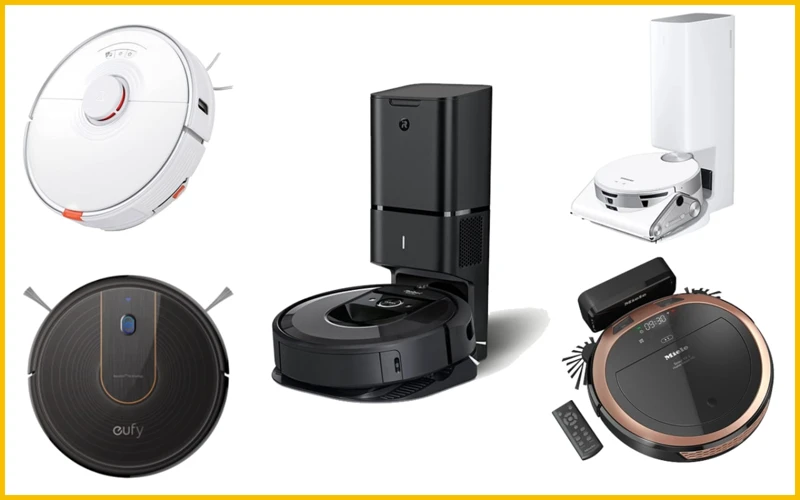
When it comes to choosing between a traditional and a robot vacuum cleaner, it’s essential to understand the differences in their technology to make an informed decision. Both types of vacuums utilize innovative technology to clean your floors effectively, but the way they do it is vastly different. Let’s take a closer look at some of the technological differences between these two types of vacuums, so you can gain a better understanding of which one is the right fit for your cleaning needs.
Navigation and Mapping Technology
The navigation and mapping technology in robot vacuum cleaners is what sets them apart from traditional vacuum cleaners. Using a combination of sensors and mapping software, robot vacuum cleaners are able to move around a room without human intervention.
Some of the key features of navigation and mapping technology in robot vacuum cleaners include:
- Laser Navigation: Some robot vacuum cleaners use lasers to map out a room before cleaning it. These lasers help the robot vacuum cleaner to identify obstacles and navigate around them.
- Camera-Based Navigation: Another navigation system used by some robot vacuum cleaners involves using cameras to create a map of the room. This can be particularly helpful for rooms with a lot of clutter or furniture, as the camera can provide a more detailed view of the space than a laser could.
- Mapping Software: Many robot vacuum cleaners use mapping software to create a map of the room they are cleaning. This software helps the robot vacuum cleaner to navigate more efficiently and to avoid obstacles.
- Smart Navigation: Some robot vacuum cleaners use smart navigation to learn the layout of a room over time. As the robot vacuum cleaner cleans a room multiple times, it can learn the layout of the room and become more efficient in cleaning it. This type of navigation is particularly useful for larger rooms or complex spaces.
In contrast, traditional vacuum cleaners rely on a human operator to navigate them around a room. This can be time-consuming and labor-intensive, especially for larger spaces. While traditional vacuum cleaners may come with attachments to help with cleaning certain areas, they do not have the same level of automation as robot vacuum cleaners.
When deciding between a robot vacuum cleaner and a traditional vacuum cleaner, it is important to consider the navigation and mapping technology available. For those who want a more hands-free cleaning experience, a robot vacuum cleaner with advanced navigation and mapping technology may be the way to go. However, for those who prefer a more hands-on approach to cleaning or who need to clean larger spaces, a traditional vacuum cleaner may still be the best option.
Filtration Technology
When it comes to filtration technology, robot vacuum cleaners and traditional vacuum cleaners differ significantly. While traditional vacuum cleaners often rely on replaceable or washable filters, robot vacuum cleaners typically use a combination of filters and dustbins to trap dirt and dust.
One common type of filter used in traditional vacuum cleaners is the HEPA (High-Efficiency Particulate Air) filter, which can capture up to 99.97% of particles as small as 0.3 microns in size. However, not all traditional vacuum cleaners include HEPA filters, so it’s important to check the product specifications before purchasing. HEPA filters need to be replaced periodically to maintain their effectiveness, and this can add to the cost of ownership.
On the other hand, robot vacuum cleaners typically use a combination of pre-filters, high-efficiency filters, and dustbins to trap dirt and dust. Many models feature HEPA-like filters that can capture particles as small as 0.1 microns in size. The dustbins are often easy to remove and empty, which can be a convenient feature for busy individuals who don’t have time for extensive cleaning.
It’s worth noting that some robot vacuum cleaners now come with self-emptying dustbins that can hold weeks’ worth of dirt and debris. This is a significant development that takes care of filter replacements and dustbin emptying at the same time, making maintenance a breeze. However, these models tend to be more expensive than traditional robot vacuum cleaners.
In terms of filtration technology, the table below provides a quick comparison of robot and traditional vacuum cleaners:
| Robot Vacuum Cleaners | Traditional Vacuum Cleaners | |
|---|---|---|
| Filter Types | Pre-filters, high-efficiency filters, and dustbins | HEPA and other replaceable or washable filters |
| Filter Efficiency | Many models feature HEPA-like filters that can capture particles as small as 0.1 microns in size | HEPA filters can capture up to 99.97% of particles as small as 0.3 microns in size |
| Filter Maintenance | Dustbins are often easy to remove and empty | Filters need to be replaced periodically, which can add to the cost of ownership |
| Self-Emptying Dustbins | Some models feature self-emptying dustbins that can hold weeks’ worth of dirt and debris | N/A |
Whether you’re looking for a robot vacuum cleaner or a traditional vacuum cleaner, it’s important to consider the filtration technology that is built into each model. While both types of vacuum cleaners can effectively clean your home, they differ in terms of filter types, efficiency, and maintenance. Choose the type of vacuum cleaner that best fits your lifestyle and preferences.
Battery Life and Charging Technology
When comparing robot and traditional vacuum cleaners, battery life and charging technology plays a significant role. Here are some factors to consider:
- Battery Life: Robot vacuums typically have a shorter battery life than traditional vacuums due to their compact size. However, newer models come with improved battery technology and can last up to 120 minutes on a single charge. Traditional vacuums, on the other hand, usually have cords that limit their range but provide unlimited use time.
- Charging Time: Robot vacuum cleaners normally require several hours to fully charge. The length of time it takes to charge a robot vacuum depends on the model and the battery technology used. In contrast, traditional vacuums do not require charging time, but users may need to wait for it to cool down before unplugging and storing it.
- Charging Station: Robot vacuums come with a charging station that must be plugged into a power outlet. The robot vacuum will automatically return to the charging station to recharge when its battery is low or when a cleaning cycle is finished. Traditional vacuums, on the other hand, do not need a charging station; instead, they are plugged directly into a power outlet.
- Battery Replacement: Robot vacuums may require a battery replacement over time. Depending on the model, battery replacement may be simple, or it may require professional assistance. Traditional vacuums do not have batteries that need to be replaced, but they may require other maintenance, such as cleaning filters and bags or replacing worn-out parts.
Considering battery life and charging technology is important when choosing whether to purchase a robot or traditional vacuum cleaner. While robot vacuums may have shorter battery lives, they have the added benefit of not being tethered to a power outlet. Traditional vacuums, on the other hand, offer unlimited use time but require an available power outlet and may not have the convenience of automatic recharging like robot vacuums. Ultimately, your decision depends on your cleaning needs and preferences.
Dustbin Capacity and Maintenance Technology
Dustbin Capacity and Maintenance Technology
One aspect to consider when comparing robot and traditional vacuum cleaners is the dustbin capacity and maintenance technology.
Robot vacuum cleaners typically have smaller dustbin capacities compared to traditional vacuum cleaners due to their compact size. This means that they may need to be emptied more frequently, especially if you have a larger home or have pets that shed a lot. On the other hand, traditional vacuum cleaners usually have larger dustbin capacities, allowing you to clean multiple rooms before needing to empty it.
When it comes to maintenance technology, both types of vacuum cleaners require regular upkeep to ensure they continue functioning properly. Robot vacuum cleaners typically have automated self-cleaning mechanisms that make maintenance easier. For example, some robot vacuum cleaners have a cleaning dock that will automatically empty the dustbin and clean the filter after each use. Others have sensors that can detect when the dustbin is full and prompt you to empty it.
Traditional vacuum cleaners require manual maintenance, such as changing the filter, checking and replacing bags, and cleaning attachments. Some newer models may have built-in sensors that alert you when it’s time to replace the filter or bag, but in general, you’ll need to keep an eye on these things yourself.
To summarize, robot vacuum cleaners have smaller dustbin capacities but may have automated self-cleaning mechanisms, making maintenance easier. Traditional vacuum cleaners typically have larger dustbin capacities but require more manual maintenance. When deciding between the two, consider the size of your home and your preferences for maintenance.
Cost Comparison
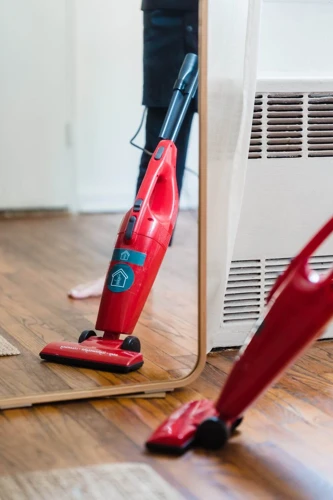
When it comes to the cost of purchasing a vacuum cleaner, there is a significant difference between robot and traditional models. Robot vacuum cleaners tend to be more expensive than their traditional counterparts due to the advanced technology that they utilize. However, the cost can vary depending on the brand, model, and features that are included.
Traditional vacuum cleaners have a wide range of prices that can fit any budget. You can find basic models that are relatively affordable, while high-end models can be quite expensive. Generally, traditional vacuums are more affordable than robot vacuums, but this depends on the brand and the model that you choose.
When considering the cost of a vacuum cleaner, it is important to take into account the long-term maintenance costs. While robot vacuum cleaners may cost more upfront, they require less maintenance over time, which can save you money. In contrast, traditional vacuum cleaners may require more frequent maintenance, such as replacing filters and cleaning the dustbin, which can add up over time.
Another factor to consider when comparing the cost of robot and traditional vacuum cleaners is the replacement cost of parts. If a component of a robot vacuum breaks down, it may be more expensive to replace due to the advanced technology. Traditional vacuum cleaners may have more affordable replacement parts since they are simpler in design.
Ultimately, the cost of a vacuum cleaner depends on your personal budget and needs. It is important to research and compare the prices, features, and long-term costs before making a purchase.
Ease of Use Comparison
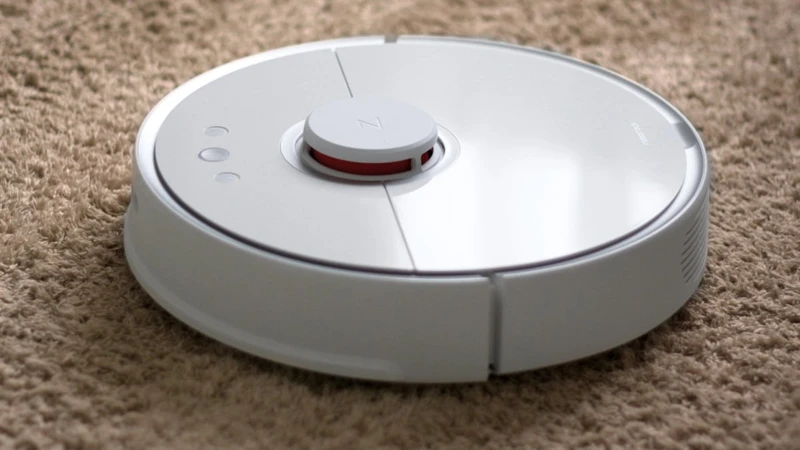
When it comes to cleaning, ease of use can make all the difference. After all, nobody wants to struggle with a cumbersome vacuum cleaner that’s difficult to set up or maintain. Whether you’re considering a robot vacuum cleaner or a traditional vacuum cleaner, the level of ease of use is an essential factor to consider. In this section, we’ll break down the various aspects of ease of use for both types of machines, highlighting their strengths and weaknesses. So, get comfortable, grab a cup of coffee and let’s dive into the world of vacuum cleaner usability.
Control Options
When it comes to control options, traditional vacuum cleaners offer basic controls such as power on/off and suction level adjustment through buttons or dials located on the machine itself. On the other hand, robot vacuum cleaners come with a remote control which allows users to control the movement and tasks of the machine. There are also models that can be controlled through a mobile app or voice commands via smart home assistants like Amazon Alexa or Google Home.
The control options for traditional vacuum cleaners are:
- Switch to turn on/off the machine
- Dial to adjust the suction level
- Cord rewind button
- Foot pedals for manual height adjustment and brush control
Control options for robot vacuum cleaners include:
- Remote control that allows users to control the vacuum cleaner’s movement and scheduling functions
- Mobile app that offers more advanced options such as setting up a cleaning schedule, selecting which rooms to clean, and checking the robot’s cleaning progress
- Voice assistants such as Amazon Alexa, Google Assistant, or Apple Siri can be used to control the robot vacuum cleaner via voice commands
- Through programming, the robot cleaner can be set up to focus on specific areas or to avoid obstacles
While traditional vacuum cleaners require manual control and supervision, robot vacuum cleaners offer more convenience and flexibility. With mobile apps and voice-assistant integration, users can schedule cleaning times and monitor the cleaning progress from anywhere. Programming features also allow the robot cleaner to work autonomously without the need for direct supervision.
It’s important to consider your own preferences and needs when it comes to control options before deciding on which vacuum cleaner to purchase. If you want more control over the vacuuming process and don’t mind manually adjusting settings, a traditional vacuum cleaner may suit you better. However, if you prefer hands-off operation and want the convenience of remote scheduling and monitoring, a robot vacuum cleaner may be the better choice.
Setup and Maintenance
When it comes to the setup and maintenance of robot and traditional vacuum cleaners, there are a few things to consider.
Setup: Robot vacuum cleaners typically require very little setup, other than charging them up and placing them in the room to be cleaned. Some models may require additional steps, such as defining the boundaries of the cleaning area or setting up automatic cleaning schedules. On the other hand, traditional vacuum cleaners may require assembly and installation of various parts, such as the dustbin, filters, and attachments.
Maintenance: Both types of vacuum cleaners require some level of maintenance to keep them running efficiently. Robot vacuum cleaners typically have a smaller dustbin and may need to be emptied more frequently than traditional vacuum cleaners. However, many newer models have self-emptying capabilities, which can reduce the amount of maintenance required. Traditional vacuum cleaners require regular filter replacement and maintenance of the brush roll to ensure optimal cleaning performance.
Robot vacuum cleaners are generally easier to set up and require less maintenance than traditional vacuum cleaners. However, some users may prefer the control and versatility that comes with a traditional vacuum cleaner, especially if they have specific cleaning needs or preferences.
Cleaning Performance Comparison
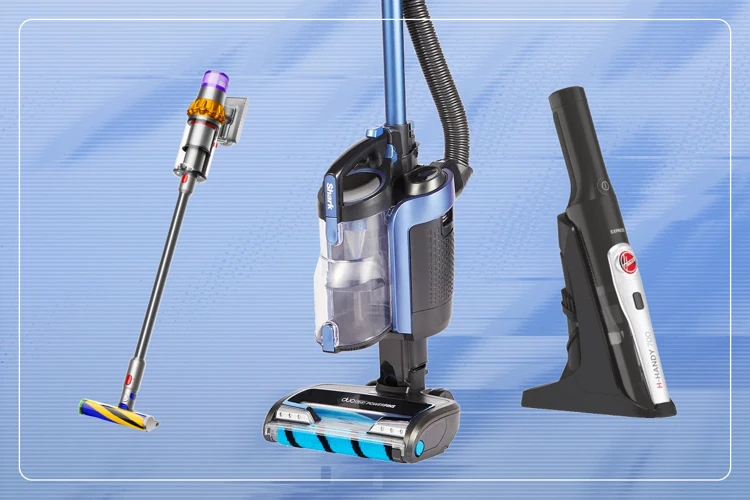
When it comes to the ultimate test of a vacuum cleaner, its cleaning performance is the most important factor to consider. It’s the main reason why we even bother buying vacuum cleaners in the first place. But, how do robot and traditional vacuum cleaners compare when it comes to cleaning performance? Let’s delve into the details and find out which type of cleaner reigns supreme in this arena. We’ll compare various aspects of cleaning performance such as surface type, obstacle handling, and pet hair to help you make an informed decision.
Surface Type
When it comes to cleaning performance, the type of surface a vacuum cleaner is used on is a crucial factor. Both robot and traditional vacuum cleaners have their strengths and weaknesses on different types of surfaces. Here’s a breakdown of how they compare:
Hard Floors:
- Robot Vacuum Cleaners: Robot vacuums are designed to work efficiently on hard floors, such as hardwood, tile, and laminate. Their small size and low profile allow them to clean under furniture and in tight spaces with ease.
- Traditional Vacuum Cleaners: Most traditional vacuums perform well on hard floors, but some models may cause surface damage if they have rough or abrasive brushes. However, there are many options available with soft bristle brushes that won’t scratch or damage hard floors.
Carpet:
- Robot Vacuum Cleaners: Robot vacuums are generally less effective on carpet than on hard floors. They may struggle with deep pile carpeting or thicker rugs, and may not pick up as much debris due to their smaller suction power.
- Traditional Vacuum Cleaners: Traditional vacuums dominate on carpet, particularly those with powerful suction and rotating brushes that can agitate and lift dirt embedded in the fibers. Many traditional vacuums also come with height adjustment and special carpet cleaning modes.
Combination:
- Robot Vacuum Cleaners: Some robot vacuums have dual brushes for efficient cleaning of both hard floors and carpets, but they may not be as powerful as traditional vacuums on carpet.
- Traditional Vacuum Cleaners: Many traditional vacuums have adjustable settings for different types of surfaces, allowing them to transition between hard floors and carpet with ease.
While robot vacuums excel on hard floors and traditional vacuums dominate on carpet, there are options available for both types of surfaces. The best choice depends on individual needs and preferences, including the type of surface being cleaned.
Dealing with Obstacles
One of the main differences between robot and traditional vacuum cleaners is how they handle obstacles during cleaning. Traditional vacuum cleaners usually have a manual adjustment feature to control the height of the brush roll, which helps to deal with different obstacles. Robot vacuum cleaners, on the other hand, rely on sensors and algorithms to adjust their cleaning path.
Traditional Vacuum Cleaners
When it comes to dealing with obstacles, traditional vacuum cleaners have a manual adjustment feature to control the height of the brush roll, allowing it to clean different surfaces effectively. This feature is particularly useful for cleaning carpets, high-pile rugs, and hard floors. However, manually adjusting the brush roll height can be cumbersome, especially if you have to do it frequently.
Traditional vacuum cleaners can get stuck when they come across large obstacles such as chairs or tables. It’s up to the user to move the furniture and clear the way for the vacuum. While this might seem like an inconvenience, it also gives the user more control over the cleaning process.
Robot Vacuum Cleaners
Robot vacuum cleaners use sensors and algorithms to detect obstacles and navigate around them. They have sensors that can detect the edges of walls and furniture, as well as avoid falling off stairs. However, some robots struggle to detect clear or shiny surfaces, such as glass doors or black floors, which can cause them to collide with obstacles.
In general, robot vacuum cleaners have a lower profile than traditional vacuum cleaners and can fit under furniture, making it easier to clean hard-to-reach areas. However, they might not be as effective in cleaning high-pile rugs or thick carpets.
Here is a summary of the differences between traditional and robot vacuum cleaners when it comes to dealing with obstacles:
| Traditional Vacuum Cleaners | Robot Vacuum Cleaners |
| :— | :— |
| Have manual adjustment feature to control brush roll height | Rely on sensors and algorithms to navigate around obstacles |
| Can get stuck when they come across large obstacles | Have a lower profile and can fit under furniture |
| Give the user more control over cleaning process | Struggle to detect clear or shiny surfaces |
Both traditional and robot vacuum cleaners have their strengths and weaknesses when it comes to dealing with obstacles. Traditional vacuum cleaners give the user more control over the cleaning process but can be more cumbersome to use, while robot vacuum cleaners rely on sensors and algorithms but might not be as effective on certain surfaces. Ultimately, the choice between the two depends on your cleaning needs and personal preferences.
Pet Hair
One of the biggest concerns for pet owners when it comes to choosing a vacuum cleaner is how well it can handle pet hair. Both robot and traditional vacuum cleaners have their strengths and weaknesses in this area.
Robot Vacuum Cleaners:
- Advantages: Robot vacuum cleaners with strong suction power and rotating brushes can effectively pick up pet hair from carpets, rugs, and hard floors. They can also reach under furniture and in tight spaces that traditional vacuums may struggle with. Some robot vacuum cleaners even come with specialized brush rolls designed specifically for picking up pet hair.
- Disadvantages: Robot vacuums can struggle with larger clumps of pet hair and may require more frequent cleaning of their brushes and dustbins. They also don’t have as powerful suction as traditional vacuums, so they may not be as effective for deep cleaning carpets where pet hair tends to hide in the fibers.
Traditional Vacuum Cleaners:
- Advantages: Traditional vacuum cleaners often have more powerful suction than robot vacuums, which can make them more effective at picking up pet hair from carpets and upholstery. Many of them also come with specialized attachments, such as pet hair brushes, to help loosen and pick up pet hair more effectively.
- Disadvantages: Traditional vacuums can be heavy and bulky, making them more difficult to maneuver around furniture and tight spaces where pet hair tends to collect. Additionally, they may not be as effective on hard floors as they are on carpets, and some models may be too powerful and actually damage delicate surfaces.
Ultimately, the best vacuum cleaner for pet hair will depend on your individual needs and preferences. If you have mostly hard floors and want the convenience of a hands-off cleaning experience, a robot vacuum cleaner may be the way to go. If you have carpets and upholstery that require deep cleaning and want a more powerful machine, a traditional vacuum with specialized attachments may be the better choice.
Noise Comparison
When it comes to noise, traditional vacuum cleaners are known to be quite loud, with some models reaching up to 80 decibels. This can be problematic for people who live in apartments or have small children or pets that may be sensitive to loud noises. On the other hand, robot vacuum cleaners are designed to operate more quietly.
Robot Vacuum Cleaners are specifically designed to be quiet because they don’t have a motor that requires a lot of power. Instead, they use a battery-powered motor and a small fan to produce suction. This produces significantly less noise than traditional vacuum cleaners, allowing users to clean their homes without disturbing others. The average noise level of a robot vacuum cleaner is between 55 and 65 decibels, making them much quieter than traditional vacuum cleaners.
Traditional Vacuum Cleaners, on the other hand, have a powerful motor that produces a lot of noise. While this loud motor can be beneficial when cleaning carpets or upholstery, it can also make it difficult to clean without disturbing others. Additionally, many traditional vacuum cleaners do not have noise reduction technology, making them even louder than some models.
While it’s important to consider the noise level of a vacuum cleaner, it’s also important to note that the noise levels can vary depending on the brand and model. Some traditional vacuum cleaners are designed specifically to reduce noise, while some robot vacuum cleaners may produce louder noises than others. It’s important to research different models and read reviews to find a vacuum cleaner that meets your specific needs.
When it comes to noise levels, robot vacuum cleaners are generally quieter than traditional vacuum cleaners. However, this is not always the case, and it’s important to research specific models before making a purchase.
Final Comparison and Conclusion
After breaking down the differences between robot and traditional vacuum cleaners, it’s time to compare the two technologies side by side and come to a conclusion.
When it comes to technology, robot vacuum cleaners have the advantage of navigation and mapping technology. They use sensors and algorithms to map out your home and create a cleaning plan, whereas traditional vacuum cleaners rely on the user to move them around the space. However, traditional vacuum cleaners have the edge when it comes to filtration. They typically feature more advanced filtration systems, which are able to capture even the smallest particles, leading to cleaner air in your home.
Another factor to consider is ease of use. Robot vacuum cleaners are typically easier to operate, with the ability to be controlled through an app, voice commands or even scheduled to clean automatically. However, traditional vacuum cleaners require more manual work and can be harder to move around, especially on thicker carpets or with large debris.
When it comes to cleaning performance, both technologies have their strengths and weaknesses. Robot vacuum cleaners are great for maintaining the cleanliness of your space on a daily basis. They are able to clean regularly and reach areas that traditional vacuum cleaners may struggle with. However, they are not always well suited for deep cleaning or handling bigger messes. Meanwhile, traditional vacuum cleaners have better suction power and are great for deep cleaning and handling larger debris.
Price is also a consideration. Robot vacuum cleaners tend to be more expensive, with the added technology driving up the cost. Traditional vacuum cleaners are typically more affordable, though high-end models with advanced features can still be expensive.
Noise is another consideration. Robot vacuum cleaners are generally quieter than traditional vacuum cleaners, which can be a benefit if you have young children, pets or live in apartments with thin walls. However, it’s worth noting that some robot vacuum cleaners still emit noticeable noise when they’re at work.
Both robot and traditional vacuum cleaners have their strengths and weaknesses. If you’re looking for convenience, ease of use and maintenance, a robot vacuum cleaner may be the way to go. However, if you’re looking for deep cleaning and more advanced filtration, a traditional vacuum cleaner could be the better choice. Ultimately, the decision depends on your individual needs, preferences and budget.
Frequently Asked Questions
1. How long does the battery of a typical robot vacuum cleaner last?
On average, a robot vacuum cleaner battery lasts between 60 to 120 minutes, depending on the model and settings.
2. Do you need to empty the dustbin of a robot vacuum cleaner after every cleaning session?
It is recommended to empty the dustbin of a robot vacuum cleaner after every cleaning session to maintain its cleaning efficiency.
3. Can a robot vacuum cleaner clean stairs?
No, most robot vacuum cleaners are not designed to clean stairs as they are unable to navigate the different levels safely.
4. Can traditional vacuum cleaners clean carpets and rugs effectively?
Yes, traditional vacuum cleaners are designed to clean carpets and rugs effectively due to their suction power and attachments.
5. Are HEPA filters necessary for vacuum cleaners?
HEPA filters are not necessary for vacuum cleaners, but they are recommended for people with allergies or respiratory issues.
6. Do robot vacuum cleaners require any setup?
Yes, robot vacuum cleaners require initial setup such as docking station placement and boundary setting for cleaning areas.
7. Can traditional vacuum cleaners clean hard-to-reach areas?
Yes, traditional vacuum cleaners come with attachments such as crevice tools and extension wands that can clean hard-to-reach areas.
8. How often should you replace the filter in a traditional vacuum cleaner?
The frequency of filter replacement in traditional vacuum cleaners depends on usage frequency and the type of filter, but most manufacturers recommend replacing it every 3-6 months.
9. How often do you need to replace the battery in a robot vacuum cleaner?
The battery in robot vacuum cleaners typically lasts for several years before needing to be replaced.
10. Can robot vacuum cleaners pick up larger debris like cereal and pet food?
Some robot vacuum cleaners have stronger suction power and larger dustbins designed to pick up larger debris such as cereal and pet food, but it may depend on the model.

